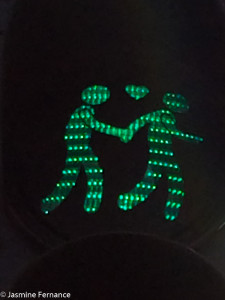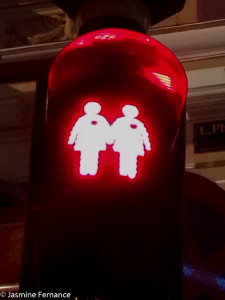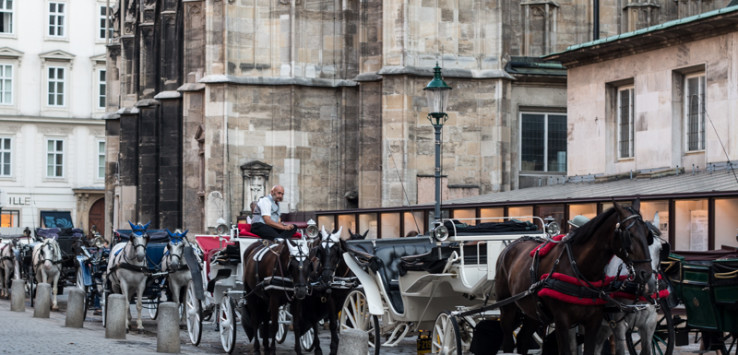Thinking about Vienna conjures images of the Viennese Waltz, the Vienna (Weiner) schnitzel (yum) and the Sacher Torte (double yum). But I didn’t think I would leave Vienna feeling that I knew what the world smelled like before cars were invented. Yes, walking through Stephansplatz, Vienna’s main square, will have you thinking you’ve stepped back in time courtesy of the numerous horses with carriages, all leaving piles and puddles which invade your sense of smell like a space invader invades, well….space. I loved Vienna, though I just had to remember to hold my nose when walking through Stephansplatz!
With three days to spend in the capital of Austria, once the centre of the mighty Habsburg empire, we had to use our time wisely to fit in as much of this historical city as possible. Here are my top sites not to be missed.
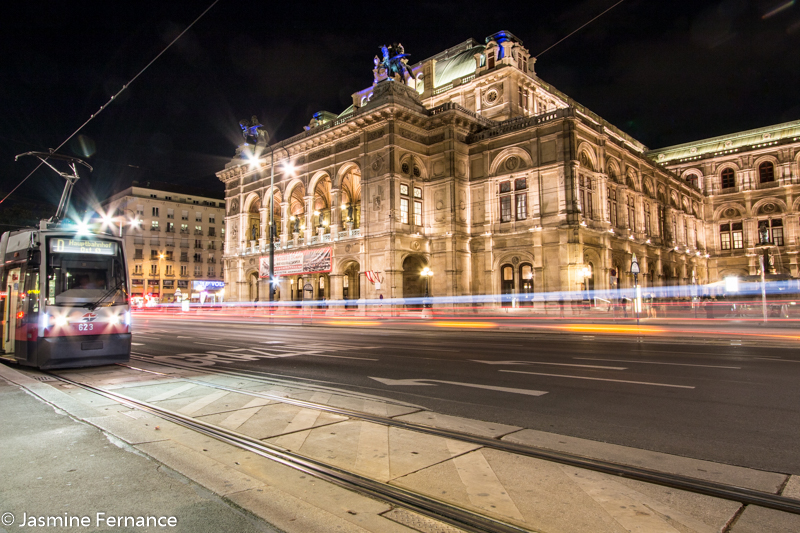
1. Schonbrunn Palace
Schonbrunn Palace was the summer residence of the Habsburg monarchs since 1642, though the building in its current form dates from the 1740-50’s, during Maria Theresa’s (mother of the infamous Marie Antoinette) reign. The inside is lavishly decorated, but unfortunately no photos allowed. You can wander through the State Apartments and private rooms of the monarchs and imagine a time gone by when these people ruled over a vast portion of Europe.
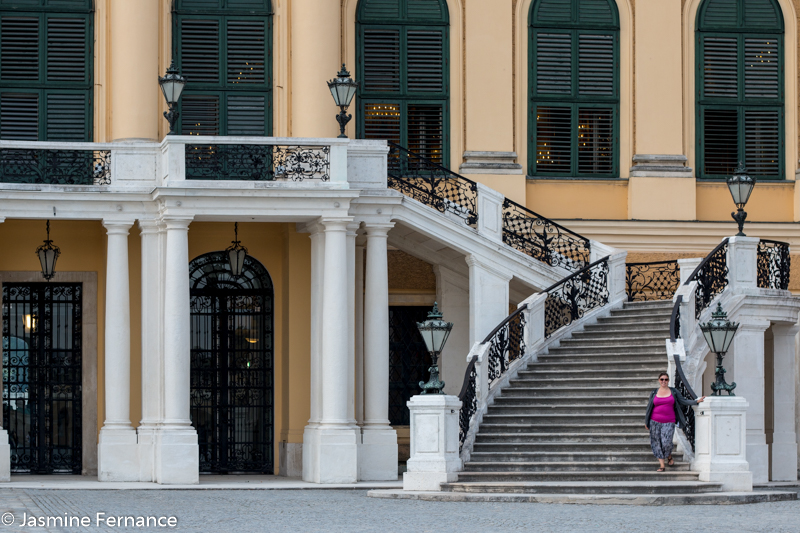
The gardens of the palace are a sight to behold in themselves and hours can be spent wandering the vast acreage, getting lost in the hedge maze and discovering old crumbling remains of fountains.
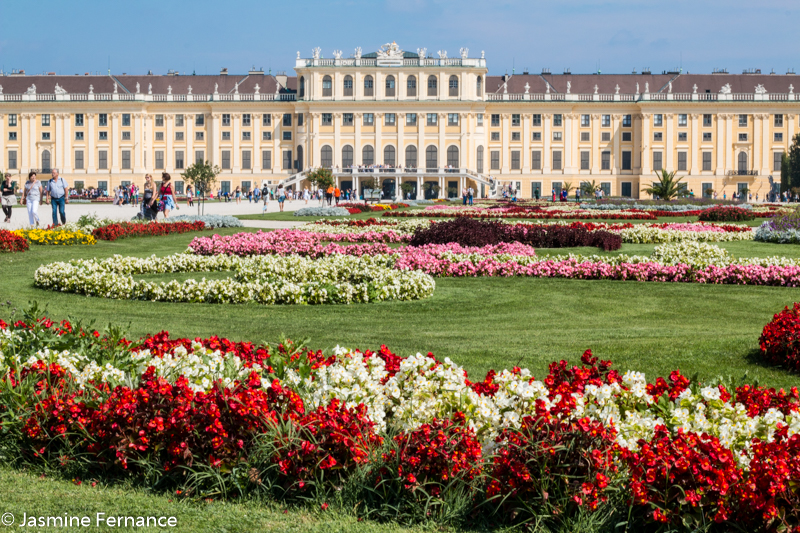
2. Hofburg Palace
Another remnant of the Habsburg monarchy, this was their main residence and is now home to several museums, including the Sisi Museum and the royal silver collection.
How did I not know anything about Empress Elizabeth, or Sisi as she was affectionately known. I hadn’t even heard of her prior to this visit to Vienna. The Sisi Museum takes you on a journey through her life, from her childhood in Bavaria, to falling in love with Emperor Franz Joseph who was supposed to marry her sister (scandal!!). It details her life at court and how she shied away from her official duties, her despair at the suicide of her only son and heir, and her sudden assassination in 1898. An intriguing life.
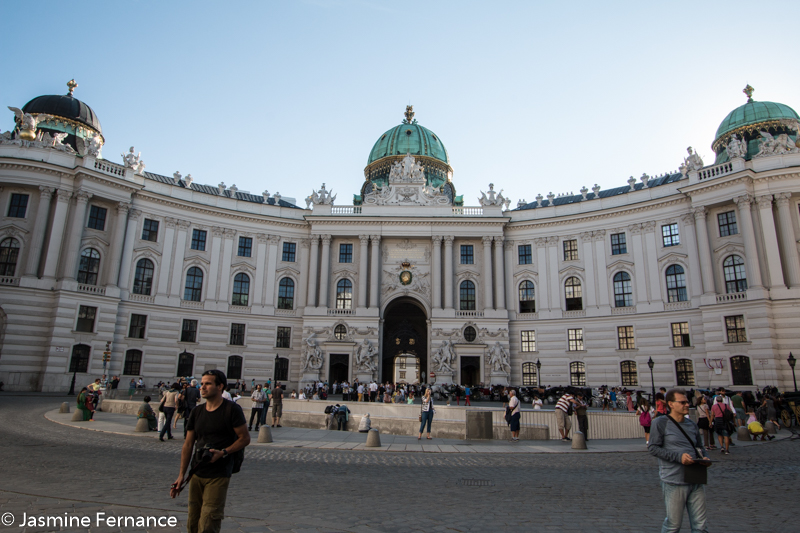
3. St Stephan’s Cathedral
The central focus of Stephansplatz, construction of St Stephan’s Cathedral commenced in 1160 and was continually expanded upon until 1511. The gothic structure is a sight to behold, with the ornately tiled roof being its (pun intended) crowning glory.
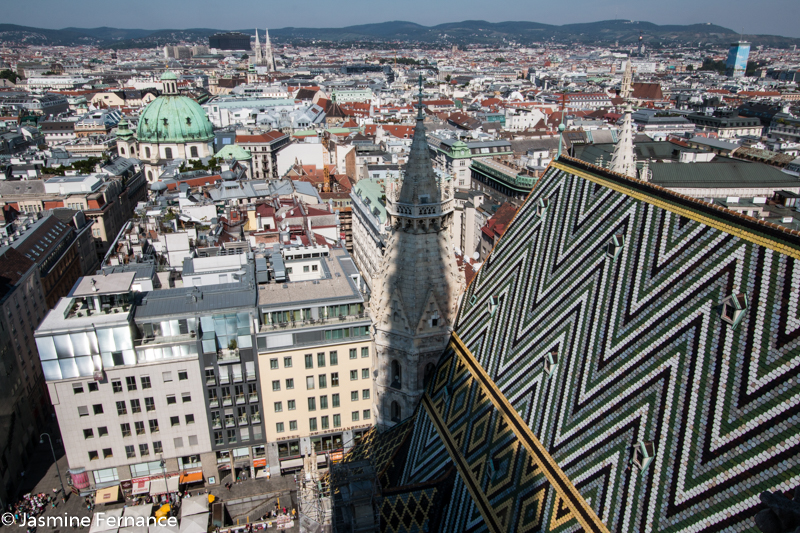
Climbing 343 stairs of the south tower of the cathedral is a difficult proposition on a hot day, but climb it we did, and the views over Vienna, with an up close look at those amazing roof tiles, make the climb up worthwhile.
From the top we go to the very bottom, the basement crypts and catacombs of the cathedral. The most interesting, and slightly horrifying, is the Ducal Crypt, where 78 containers sit holding the bodies, hearts or viscera of 72 members of the Habsburg family. Kinda gross really.
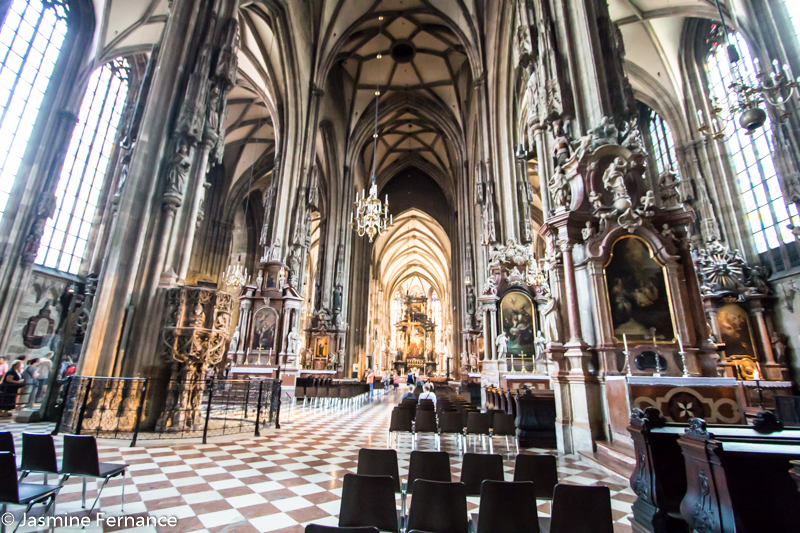
4. Visit Vienna State Opera
Completed in 1869, the opening of the Vienna State Opera was attended by Emperor Franz Joseph and Sisi. Today there are more than 50 productions staged here each year, and the Vienna Philharmonic members are recruited from the Vienna State Opera. It’s an opulent building that really shines at night.
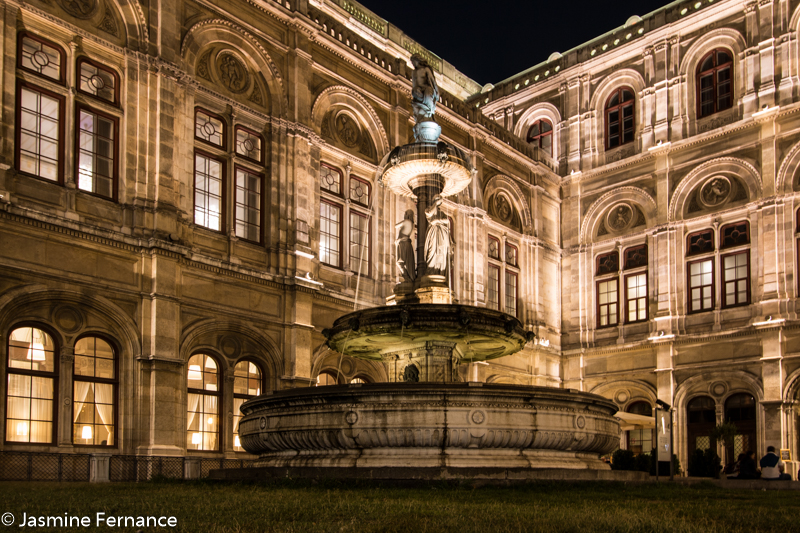
5. Many statues of composers
Vienna is synonymous with classical composers so it’s no wonder that the city is dotted with so many statues to commemorate and memorialise them. See you many you can find!
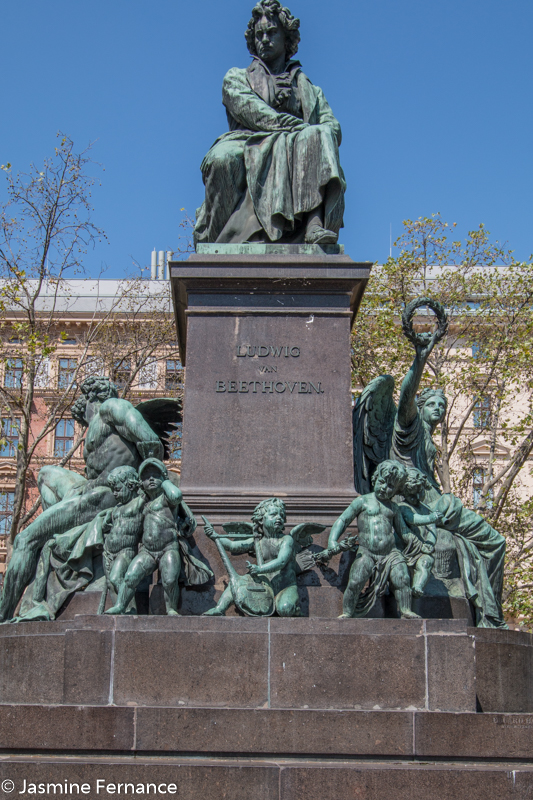
6. Circle Tram
The Vienna Ring Tram follows the Ringstrausse and completes the full circuit in about 25 minutes, passing many of Vienna’s most important monuments and buildings. It’s an ideal way to get an overview of the city, and leaves every 30 minutes from Schwedenplatz from 8:30am.
7. See a local Concert
No visit to Vienna is complete without seeing/listening to an orchestra play the classics of Viennese composers. We decided to combine this with a dinner/concert package at the Kursalon and had a magical night of music, ballet and opera. There are many venues across the city that offer wonderful ways to experience Viennese music at its best, so there is a lot to choose from.
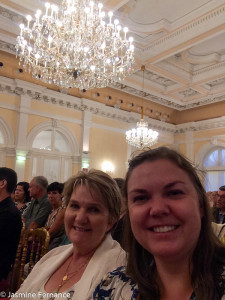
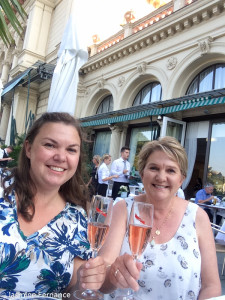
One of my favourite things in Vienna, but not really an attraction, are the pedestrian traffic lights in the city centre. Installed when Vienna hosted Eurovision, they are a great way to show the Viennese support for equality for all, and make crossing the road a little more fun.
